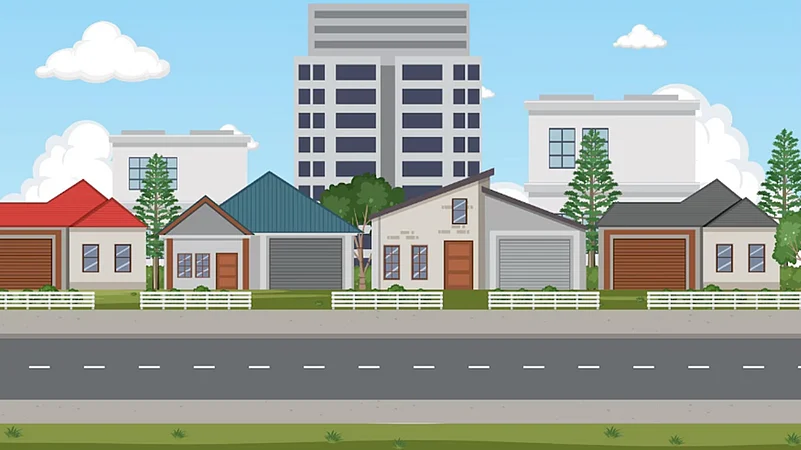Expressways and highways today are more than just transport corridors—they are engines of urbanisation. With governments aggressively promoting infrastructure-led development, these zones are fast emerging as the backbone of future cities. Homes in these locations usually benefit from faster appreciation, better civic upgrades, and strong long-term liquidity.
However, is it a good idea to buy a home near expressways?
Key Benefits And Drawbacks
Purchasing or constructing a home near a highway or expressway provides seamless connectivity to business districts and transport nodes. “It also offers higher appreciation potential, especially in early- development phases, along with first-mover advantages in civic infrastructure such as metro expansions, utilities, and social infrastructure,” says Sam Chopra, President & CEO, eXp Realty India.
Sunny Katyal, Co-Founder of Investors Clinic, adds, “It often makes good sense, especially if connectivity and long-term value are your priorities. The biggest draw is the easy access—these areas tend to get metro links, flyovers, and commercial development much faster. Early buyers usually see good capital appreciation as the surroundings evolve.”
Real estate developers say buying a home near a highway or expressway has become increasingly practical due to enhanced connectivity, reduced travel time, and growing social infrastructure.
“Although concerns about noise, pollution, and safety persist, demand in these areas is rising, particularly among commuters and investors. Residential developments close to highways are guided by regulatory norms which create buffer zones and maintain safety protocols. Properties located near highways maintain competitive launch prices while showing potential for increased capital appreciation because of enhanced connectivity, thus attracting market interest. For example, the Yamuna Expressway along with Dwarka Expressway has generated substantial project interest from buyers who want to combine lifestyle requirements with future value benefits,” says Robin Mangla, President, M3M India.
However, there are a few drawbacks and buyer concerns also. The most common buyer concerns in such zones are noise pollution, air quality, safety of family members (especially children and elderly).
Noise pollution, for instance, can be an issue without a proper buffer, and prices are usually a bit higher at the start.
Thankfully, such trade-offs are increasingly being mitigated by green buffers and setbacks, sound-insulated construction, service roads and smart landscaping, as well as masterplans designed with human-scale resilience.
“In cities like Delhi-NCR, Mumbai, Pune, and Bengaluru, locations along the expressway have become growth magnets. But it’s equally important to ensure the project complies with NHAI norms, which mandate a 7.5 m setback from the highway based on the road category," says Katyal.
Before you take a decision whether to buy or not, here are some factors to consider:
How Does Proximity To Expressways Impact Property Prices?
According to industry experts, expressway-adjacent micro-markets often enjoy launch-stage premiums due to future connectivity, accelerated appreciation curves as public infrastructure comes online, and sustained resale value, especially when liveability matures.
“Along Dwarka Expressway, for instance, prices surged from Rs 5,359 per sq ft in 2019 to Rs 10,350/sq ft in 2024—a 93 per cent increase. Some projects now quote Rs 12,000–Rs 14,000/sq.ft. Likewise, Sohna and New Gurugram witnessed appreciation of 43–59 per cent over 5 years, while in Noida Expressway prices surged from Rs 5,075/sq ft to Rs 8,400/sq ft in under 5 years,” informs Chopra.
This is not anecdotal but systemic. Buyers are rewarded for proximity to infrastructure nodes, especially when they intersect with economic zones or transit hubs.
Legal Norms For Buildings Near Highways
Under NHAI and Building Control Rules (1964), the norms are clear for building a home near a highway.
“In rural zones, for instance, buildings must be at least 75 feet away from the highway centerline. The distance allowed in urban or industrial areas is 60 feet from the centerline, and any structure within 40 meters is illegal unless specially cleared,” informs Chopra.
For building projects between 40 and 75 meters from the highway, one needs an NOC (No Objection Certificate) from the highway authorities, as well as local municipal clearances.
In short, if you're building a home close to a highway, you need proper legal clearance to avoid problems later.
“Keeping these factors in view, we strictly discourage any buyer from engaging with non-compliant or borderline-legal properties. Urban resilience begins with legal compliance,” Chopra says.
Review Master Plan
You also need to examine the area’s master plan before acquiring any property that lies adjacent to highways. The master plan defines the future land use patterns which include upcoming residential developments and commercial buildings alongside potential industrial sites.
Entry-Exit Points And Service Road Facility
Modern highways are built with predetermined access points, thus allowing entry only from established locations. The distance to the closest highway entry and exit points should be verified when purchasing property adjacent to a highway.
Also, the presence of a service road next to the highway makes property access simpler and enhances property security. This can increase the value of your investment.
Regions That Have Surged Due To Expressway Development
Some of the regions that have surged due to expressway development include:
• Dwarka Expressway (Gurgaon–Delhi): Massive appreciation and luxury pipeline
• Yamuna Expressway (Noida): Boosted by the Noida International Airport and logistics zones
• Delhi–Mumbai Expressway: Opening new hubs in Sohna, Palwal, and parts of Rajasthan
• Mumbai–Pune Expressway: Sparked residential and second-home boom in Panvel, Lonavala, Talegaon
• Samruddhi Mahamarg (Maharashtra): Early signs of land price doubling in growth pockets
What Should Buyers Do?
For the modern homebuyer or investor, proximity to infrastructure is no longer a luxury—it’s a strategic necessity. Expressways are not just conduits of movement; they are corridors of value creation, lifestyle evolution, and urban transformation.
However, purchasing a home near a highway or expressway is entirely a buyer’s personal choice and depends on his requirement and future needs. To maximise your returns, it’s important to carefully weigh the pros and cons before making a move.










